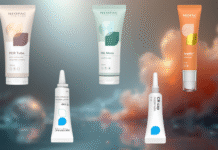
A BillerudKorsnäs trend report, ‘Challenging Conventional Packaging – Trends that shape Future Business Perspectives’ – cites global megatrends such as urbanization, sustainability, mobility, digitization & connectivity, the transformation of traditional value chains, and beyond demographics. In this context, sustainability is the most critical trend for Indian packaging. The benefits of packaging are outweighed by its every disadvantage, such as landfills, poisonous emissions on the burning of plastic, and the clogging of already vulnerable wastewater systems.

The second most important trend for Indian packaging is ‘beyond demographics.’ This is first of all because of the widely used expression to create the myth of automatic wealth descending from heaven on the overpopulated country because of its ‘demographic dividend.’ There is not going to be any demographic dividend, and the creation of wealth does not imply that it will either be equitably distributed or even that it will trickle down to the large population of those under 35. Without investment in education and meaningful jobs, and valuable products and services being created, there will be no dividend of any kind.
Beyond demographics is perhaps the most critical trend for Indian packaging because, as the BillerudKorsnäs report says, “Age, gender and origin are no longer the keys to defining consumers. People want and expect customized offerings that are based on their needs and their search for experiences . . . There is a need to understand people’s value systems and preferences, more than their demographic descriptors.”
The implications of this megatrend are not going to be easy to apply to packaging, which is perhaps (apart from elections) one of the best benchmarks of a culture and its change. Interestingly, while electoral practices and tastes are often retrograde and behind the times, packaging tends to be futuristic. While elections in India these days tend to tilt toward majoritarian values, branding and packaging point to a future of greater equity and personal choice.
Megatrends in action – Unilever says No to ‘Normal’
When it is not merely beating down packaging prices in reverse auctions, Hindustan Unilever is seen by the Indian packaging industry as one of its most important benefactors. And one should welcome its leadership role not only in industry but also in packaging that intersects deeply with culture.
In this context, we present below some of the noise that the company has been creating in the media and social media, touching on both the megatrends above. Among several stated positive goals, the company is big on sustainability with its plans to improve its packaging’s carbon footprint. It plans to use at least 25% post-consumer recycled plastic (PCR) by 2025 and become a net-zero carbon emission company by 2039. One has heard its executives openly saying, “If there is no water, how will we sell washing soap?”
Among its several stated positive goals – in the ‘beyond demographics’ category, the company says it will champion equity, diversity, and fairness, which has not yet been achieved anywhere in the world. In the Indian context, one must also acknowledge the challenges it will face. For instance, in changing or adapting the concept and cultural prejudice behind its fairness creams – the transition from Fair and Lovely to Glow and Lovely needs to be more than camouflage. It needs to transform a dominant 40% market share in that segment to a larger than bottom line mind share.
New Positive Beauty Vision
Unilever announced it would eliminate the word ‘normal’ from all of its beauty and personal care brands’ packaging and advertising as part of the launch of its new ‘Positive Beauty’ vision and strategy on 9 March 2021. According to the company, ‘Positive Beauty,’ which sets out several progressive commitments and actions for its beauty and personal care brands, including Dove, Lifebuoy, Axe, and Sunsilk, will champion a new era of beauty meant to be equitable and inclusive – as well as sustainable for the planet.
“Using world-class innovation and technology, the new vision is meant to help drive a transformation in how products are designed and formulated so that they do more good for both people and the planet, deliver a superior product experience and tap into consumer trends. The decision to remove ‘normal’ is one of many steps that we are taking to challenge narrow beauty ideals as we work towards helping to end discrimination and advocating for a more inclusive vision of beauty. It comes as global research into people’s experiences of the beauty industry reveals that using ‘normal’ to describe hair or skin makes most people feel excluded.”
A 10,000-person study, commissioned by Unilever, was conducted across nine countries – Brazil, China, India, Indonesia, Nigeria, Saudi Arabia, South Africa, UK and the US. The study apparently found – more than half of people (56%) think that the beauty and personal care industry can make people feel excluded.
People want to see the beauty and personal care industry focusing more on making people feel better than just looking better (74%). More than half of the respondents (52%) say they now pay more attention to a company’s stance on societal issues before buying products. Seven in ten people agree that using the word ‘normal’ on product packaging and advertising has a negative impact. For younger people – those aged 18-35 – this rises to eight in ten.
The Indian challenge
The press release points to some of the highlights in the company’s study relating to India. In India, making products that cater to all people is recognized as one of the most pressing challenges that the beauty and personal care industry (BPC) should address, only behind making products affordable for all and being transparent on what ingredients are included.
Almost two in three people in India (64%) agree that the beauty and personal care industry makes certain people feel excluded. Six in ten people in India (59%) say the industry makes certain people feel bad about the way they look and makes certain people feel bad about themselves (59%).
The beauty industry contributes to the spread of narrow beauty ideals – over six in ten people in India (63%) agree that the beauty and personal care (BPC) industry shares narrow beauty ideals. Two in three (66%) think that the industry pressurizes people into thinking they need to look a certain way contributes to narrow beauty ideals.
The majority of people in India agree that the BPC industry still has some way to go in representing people of various body types (76%), people from different age groups (77%), people from different ethnicities (74%), and people from the LGBTQIA+ community (67%).
Over eight in ten people (83%) think that using the word ‘normal’ on beauty product packaging and in advertising has a negative impact on people. This includes making people who don’t feel as though they have ‘normal hair’ or ‘normal skin’ feel excluded or feel bad about themselves.
The majority of people in India (this actually means the majority of those Indians interviewed in the Unilever study that interviewed 10,000 persons across nine countries) feel positive about Unilever’s commitment. They agree that removing the word ‘normal’ would inspire them to feel more positive about the way they look (70%), believe that it is the right thing to do (69%), and feel positive about the company behind it (67%).
The press release claims that two in three people in India (65%) say they now pay more attention to a company’s stance on societal issues before they buy products than they used to. Six in ten people there (63%) will not buy a product if they disagree with the company’s vision of diversity and inclusion (D&I), even if the company offers the best price.
With its commitment, the majority of people in India (71%) think Unilever is working to broaden the definition of beauty in society. Additionally, broadening the definition of beauty is the right thing to do for profit and for people, according to seven in ten people in India.
Sunny Jain, president of Beauty & Personal Care at Hindustan Unilever, said: “With one billion people using our beauty and personal care products every day, and even more seeing our advertising, our brands have the power to make a real difference to people’s lives. As part of this, we are committed to tackling harmful norms and stereotypes and shaping a broader, far more inclusive definition of beauty.
“We know that removing ‘normal’ from our products and packaging will not fix the problem alone, but it is an important step forward. It’s just one of a number of actions we are taking as part of our Positive Beauty vision, which aims not only to do less harm but more good for both people and the planet.
“With more consumers than ever rewarding brands which take action on the social and environmental issues they care about, we believe that Positive Beauty will make us a stronger and more successful business.”
Calling what is essentially still a skin-lightening cream by any other name makes absolutely no difference in changing deep-set attitudes towards skin color. ‘Glow’ itself is a word associated with colorism in the Indian context and the cosmetic removal of ‘fair’, the bigger ‘villain’ here, is merely a cosmetic change. – The rise of campaigns such as #DarkAndBeautiful and #UnfairAndLovely are prime examples of how younger communities feel about colorism in India. – What’s wrong with Glow and Lovely? by Rutvi Sheth on medium.com
Shape, size, proportion, or skin color – driving change by 2030
The release goes on to say, “In addition to removing the word ‘normal’, Unilever will not digitally alter a person’s body shape, size, proportion or skin color in its brand advertising, and will increase the number of advertisements portraying people from diverse groups who are under-represented.”
The company states that its decision to remove ‘normal’ from our packaging and advertising is just one action within the set of three commitments to create real and measurable impact – action through its brands to improve health and wellbeing and advance equity and inclusion, reaching 1 billion people per year by 2030.
1. Helping to end discrimination in beauty and champion inclusion by challenging narrow beauty ideals and building a more inclusive portfolio of products. Driving gender equity, including stepping up brand programs, advocacy to challenge the status quo, and #unstereotyping advertising. Improving health and wellbeing through existing educational initiatives in handwashing and oral hygiene and expanding focus into new areas, including physical health and mental wellbeing.
2. Helping to protect and regenerate 1.5 million hectares of land, forests and oceans by 2030, which is more land than is required to grow the renewable ingredients in Unilever’s beauty and personal care products.
3. Supporting a global ban on animal testing for cosmetics by 2023, working alongside lawmakers, animal protection organizations, and like-minded companies. Twenty-three Unilever beauty and personal care brands are now PETA Approved, with more working towards certification.
The last paragraph of the press release states the company’s ambition to “accelerate our science and technology programs and innovation. Innovation will also advance the use of more natural, biodegradable, and regenerative ingredients – alongside continued packaging innovations that use less, better, or no plastic.”
How relevant are megatrends to a country like India and an industry such as packaging? One would love to criticize the Unilever study, but it is an example of a company trying to understand and redefine its business. Actually, it’s a matter of the company’s long-term survival and growth – a perspective that the packaging industry should also share.











